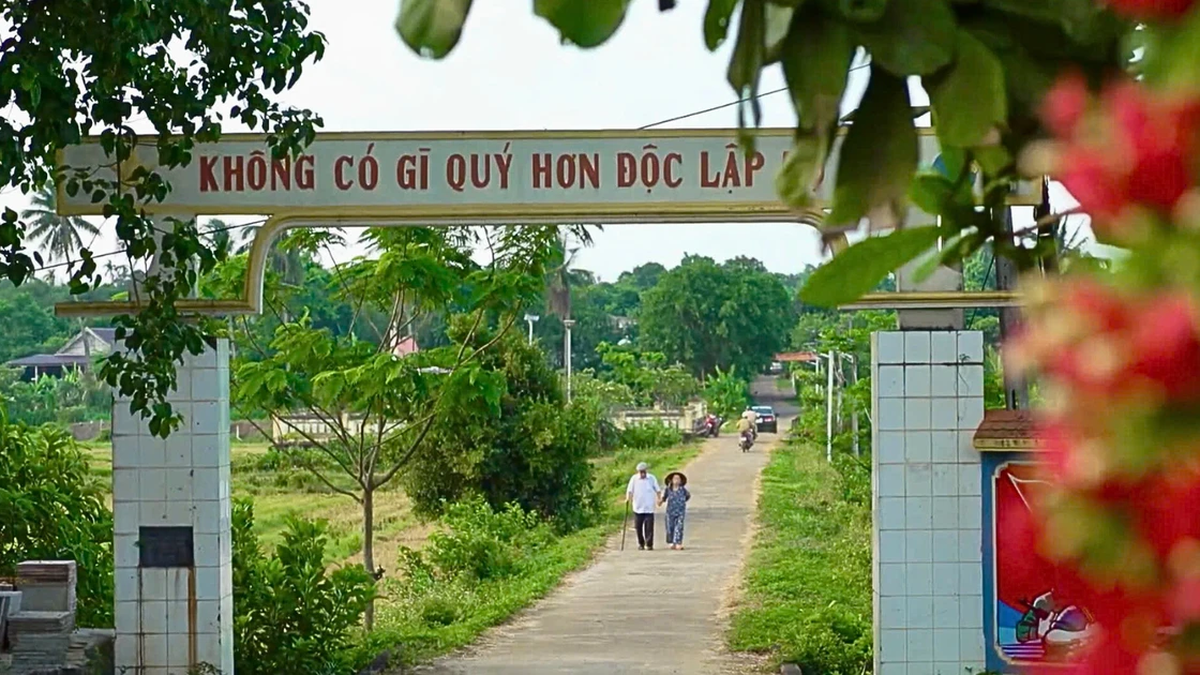Nghe An Provincial People's Committee has just issued Decision No. 3560/QD-UBND dated November 1, 2023 to implement the Green Growth Action Plan of Nghe An province for the period 2021 - 2030.
The Green Growth Plan is designed to contribute to promoting economic restructuring associated with growth model innovation, to achieve economic prosperity, environmental sustainability and social equity; towards a green, carbon-neutral economy and to contribute to the goal of limiting global warming.

Accordingly, the plan sets out specific goals in each area:
- Target on reducing greenhouse gas emissions intensity: By 2030, the greenhouse gas emissions intensity per gross regional domestic product (GRDP) of Nghe An province will decrease from 9 - 18.4% compared to 2018.
- Goals on greening production: Transforming the growth model towards greening economic sectors, applying the circular economic model through exploiting and using natural resources and energy economically and efficiently based on science and technology, applying digital technology and digital transformation, developing sustainable infrastructure to improve growth quality, promote competitive advantages and minimize negative impacts on the environment.
By 2030, the average primary energy consumption per GRDP in the period 2021 - 2030 will decrease by 1.0 - 1.5%/year. The proportion of renewable energy in total primary energy supply will reach 15 - 20%. The digital economy will reach 30% of GRDP. The forest coverage rate will be stable at 58%.
At least 30% of the total irrigated upland crop area applies advanced, water-saving irrigation methods; 90% of production and business establishments have treatment systems that meet environmental standards.
- Goals on greening lifestyles and promoting sustainable consumption:
Building a green lifestyle combined with a beautiful traditional lifestyle to create a high quality life in harmony with nature.
Implement urbanization and build new rural areas to ensure green and sustainable growth goals. Create a sustainable consumption culture in the context of integration with the world.
By 2030, the collection rate of solid waste generated in urban areas will reach 99% and in rural areas will reach 80%. The rate of collected solid waste treated to meet environmental protection requirements will reach 95%. The rate of urban solid waste treated by direct burial compared to the amount of collected waste will reach 30%. The rate of urban wastewater collected and treated to meet prescribed standards and regulations will reach over 50% for urban areas of type II or higher and 20% for the remaining urban areas. The rate of public transport will be 3-6%.
- Goals on equality, inclusion, and resilience in the green transition: Improve people's quality of life and resilience to climate change, ensure equality in conditions and opportunities to develop capacity and enjoy the fruits of development, and leave no one behind in the green transition.

By 2030, the human development index (HDI) will reach over 0.75. The urbanization rate will reach 40-45%. The proportion of people in urban areas of type V and above who are provided with clean water from a centralized water supply system will reach 100%. The proportion of the rural population using clean water that meets standards will reach 60%.
Along with the goals, the Provincial People's Committee also proposed many important solutions related to each specific field and industry. Among the 11 solutions, the most notable are the solutions on building economic models, mechanisms, policies and resource investment.
For example, building new rural areas with synchronous and gradually modern economic and social infrastructure; reasonable economic structure and production organization forms, linking agricultural development with industry and services; linking rural development with urban areas.
Comprehensive review and assessment of the fields of solid waste treatment, urban water supply, drainage and urban wastewater treatment in the province.
Develop renewable energy sources and new energy sources reasonably, in accordance with local potential. The energy saving rate on total final energy consumption compared to the normal development scenario will reach about 7% in 2030 and about 14% in 2045.
Continue to mobilize tourism businesses to invest in building green hotel models; use environmentally friendly technology and materials to reduce greenhouse gas emissions, minimize wastewater, and save electricity and water during operations. Develop “green” tourism products: eco-tourism, community tourism, rural agriculture to effectively exploit tourism resources. Apply achievements of the 4.0 industrial revolution in tourism development.
Improve the capacity and quality of public passenger transport services; encourage businesses and transport service establishments to prioritize investment and operation of fuel-efficient and environmentally friendly buses and taxis such as hybrid vehicles; vehicles using CNG, LPG; electric vehicles, etc.
Develop circular economic models in industry to utilize used raw materials, reduce processing costs, maximize resource value, and limit waste and emissions to the environment.

Continue to effectively implement the project on livestock development associated with product processing and consumption in Nghe An province for the period 2021-2030 on converting small-scale, dispersed livestock farming methods to farm farming, forming key livestock farming areas associated with environmental protection, biosafety and application of technology in the fields of livestock and veterinary medicine.
Improve the economic efficiency of planted forests, develop social forestry, plant large timber forests, precious timber and non-timber forest products, especially medicinal herbs; promote production forest planting, form raw material areas for the wood and non-timber forest product processing industry; organize forestry production according to the value chain, replicate cooperative economic models in forestry.
Implement well the forest environmental service policy, raise awareness of forest management and protection for organizations and communities; strive to achieve an average forestry production value growth rate of about 5.5-6%/year.
Source


































































































Comment (0)